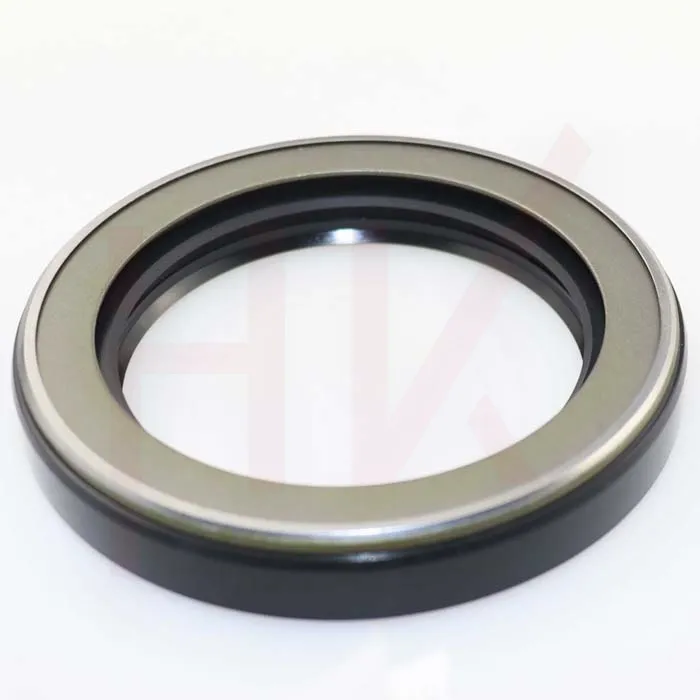Dis . 04, 2024 09:37 Back to list
hydraulic cylinder seal repair
Hydraulic Cylinder Seal Repair A Comprehensive Guide
Hydraulic cylinders are critical components in various machinery, playing a vital role in converting hydraulic energy into mechanical power. However, like any mechanical system, they can experience wear and tear, leading to seal failures. A seal failure can lead to leakage, reduced efficiency, and costly downtime. Understanding the process of hydraulic cylinder seal repair is essential for maintenance and cost-effectiveness.
Understanding the Role of Seals
Seals in hydraulic cylinders serve to contain the hydraulic fluid within the cylinder and prevent it from leaking. They also minimize contamination from external debris. The main types of seals used in hydraulic cylinders include
1. Rod Seals Prevent fluid from leaking out of the cylinder as the rod extends and retracts. 2. Piston Seals Ensure that fluid does not bypass the piston, allowing for efficient operation of the hydraulic system. 3. Guide Rings Help to center the rod and piston within the cylinder, reducing wear.
Identifying Seal Failure
Recognizing early signs of seal failure is crucial for timely repairs. Some common indicators include
- Fluid Leaks Visible leaks around the rod or piston area are the most obvious signs. - Reduced Performance Difficulty in lifting or moving loads can indicate that the cylinder is not generating enough pressure due to leaks. - Increased Noise Unusual sounds like grinding or squeaking can signal that the seals are damaged and that metal is rubbing against metal.
Repair Process
When you’ve identified a seal failure, the repair process typically involves several steps
hydraulic cylinder seal repair

1. Disassembly Begin by safely removing the hydraulic cylinder from the machine. Ensure the system is depressurized and drained of hydraulic fluid before disassembly.
2. Inspection Once disassembled, carefully inspect all components, particularly the seals, piston, rod, and cylinder walls. Look for signs of wear, scratching, or damage.
3. Seal Replacement Remove the old seals. Clean the sealing surfaces thoroughly to prevent contamination. Install new seals, ensuring they are suitable for the application and compatible with the hydraulic fluid used.
4. Reassembly Carefully reassemble the cylinder, ensuring that all components are aligned correctly. Use appropriate torque specifications for all fasteners to prevent future issues.
5. Testing After reassembly, reattach the cylinder to the hydraulic system and conduct pressure tests. Monitor for leaks and ensure that the cylinder operates smoothly.
Preventive Maintenance
Regular maintenance can prevent seal failures and extend the life of hydraulic cylinders. Here are some preventive measures
- Regular Inspections Schedule periodic inspections to catch any early signs of wear and tear. - Cleanliness Keep hydraulic systems clean to avoid contamination, which can lead to premature seal failure. - Proper Operating Procedures Avoid exceeding the hydraulic system's pressure limits and operating the machinery in extreme conditions, which can stress seals.
Conclusion
Hydraulic cylinder seal repair is a critical aspect of maintaining hydraulic systems. Prompt identification and repair of seal failures can save time and money by preventing more extensive damage and system downtime. By understanding the role of seals, recognizing failure signs, and implementing a thorough repair and maintenance regimen, operators can ensure their hydraulic systems remain efficient and reliable. Regular attention to seal health and preventive practices will greatly enhance the longevity and performance of hydraulic cylinders.
-
Unlocking the Potential of Hydraulic Systems with Essential Sealing Solutions
NewsAug.06,2025
-
Unleash the Power of Your Hydraulic Systems with Our Premium Seal Kits
NewsAug.06,2025
-
Specialized Hydraulic Seal Kits for Breakers, Pistons, and Presses
NewsAug.06,2025
-
Revitalize Hydraulic Systems with Premium Repair and Seal Kits
NewsAug.06,2025
-
Fortify Your Cylinders with Premium Sealing Solutions
NewsAug.06,2025
-
Elevate Hydraulic System Reliability with Specialized Seal Kits
NewsAug.06,2025
-
TCN Oil Seal Metal Ring Reinforcement for Heavy Machinery
NewsJul.25,2025
Products categories
















